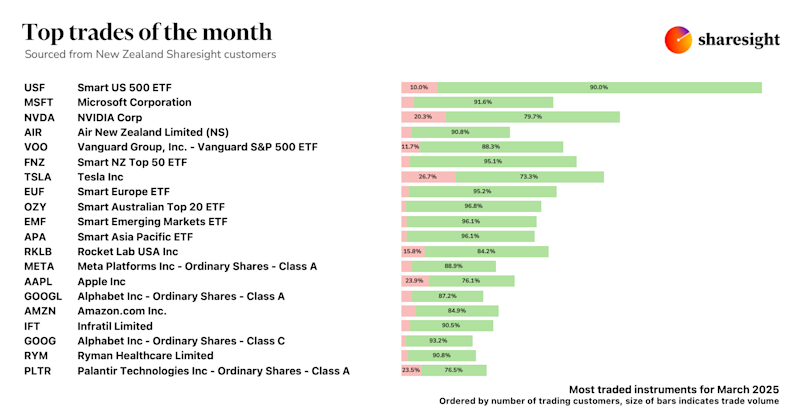Top 4 challenges advisors face in the Great Wealth Transfer
Disclaimer: This article is for informational purposes only and does not constitute a specific product recommendation, or taxation or financial advice and should not be relied upon as such. While we use reasonable endeavours to keep the information up-to-date, we make no representation that any information is accurate or up-to-date. If you choose to make use of the content in this article, you do so at your own risk. To the extent permitted by law, we do not assume any responsibility or liability arising from or connected with your use or reliance on the content on our site. Please check with your adviser or accountant to obtain the correct advice for your situation.
Currently underway, the ‘Great Wealth Transfer’ has widely been described as the biggest wealth transfer in history. As part of this global economic phenomenon, an estimated US$68 trillion in global assets is expected to shift from the estates of Baby Boomers to their descendants over the next 20-30 years, which is likely the largest intergenerational wealth shift in history. In Australia alone a 2021 Productivity Commission report estimated that about A$3.5 trillion in assets will change hands by 2050. This will mostly take the form of residential property, unspent retirement funds and other investment assets bequeathed to family beneficiaries.
Similar trends have been noted in the US, Canada, the UK, major European countries and New Zealand. For researchers and economists, the question is whether this impending wealth transfer will have a greater economic and social impact across generations compared to previous wealth transfers. For financial advisors it is an opportunity to not only ensure the financial security of existing clients in retirement but to assist the next generation with their own financial journey. However, research suggests advisors could be better prepared for this responsibility, with four key areas of improvement.

Connecting with clients’ family
Research by Octopus Investments in the UK found half of financial advisors were concerned that when clients die their assets will be passed to beneficiaries unlikely to turn to them for advice. Most advisors assumed their deceased clients’ beneficiaries would spend their inheritance despite evidence that many would need some guidance to invest the windfall. The research concluded that this disconnection had occurred because just 16% of advisors are working with more than one generation of their clients’ family and many did not have a clear value proposition for new clients aged under 30.
US research found that three-quarters of respondents over 70 at least had a will and this cohort were more likely to have engaged family members in basic estate planning. However, successful wealth transfers extend well beyond paperwork, be this the drafting of wills or minimising tax liabilities. Clients introducing beneficiaries, especially family members, to a financial advisor before their faculties are diminished can go a long way to managing future inheritance expectations.
Tech, more tech and social media
Many financial advisors have built their businesses on catering to the Baby Boomer generation and must come to terms with younger generations of clients who have different needs and preferences. At a time where communication is key, this cohort is likely to prefer digital or tech-driven solutions (video conferencing), streamlined processes (financial planning software, automated portfolio construction) and a strong online presence (engaging website) if they are to maintain the relationship. When Cerulli Associates in the UK found that 87% of children planned to take management of their inheritance elsewhere, it did not take much more probing to conclude that “elsewhere” was likely to involve a digital offering often sourced via social media.
While social media has become a valuable tool for financial advisors to connect with prospects and grow their businesses, not all social media platforms are created equal. LinkedIn is the most popular social media platform for financial advisors, as it’s geared towards professional networking and allows for in-depth discussions on financial topics. Facebook, Instagram and Twitter can also be useful for reaching a wider audience but may require a different approach to content, with a mix of blog posts, videos and infographics that showcase your expertise to a target audience.
Improving financial literacy
Younger people may have little financial knowledge and no experience with the wealth transfer process. Combine this with situations where both client and their beneficiary children have limited knowledge of financial terms, economic conditions or investment strategies and it can be hard to explain the next steps and impossible to show where you are adding value. When asked about the difficulties they experienced in providing advice to 18 to 34-year-olds, almost half (48%) of advisors said this cohort is less engaged or interested in their finances, according to the Octopus Investments research.
A similar percentage (46%) reported that this generation doesn’t see the value financial advisors provide, and 38% believed this age group lacks knowledge about finance. However, financial advisors should be prepared to accommodate those potential clients unfamiliar with complex financial terminology and anxious about the next steps. After all, the wealth transfer from parent to child may represent the largest sum of money they will ever have.
Managing client emotions
In addition to properly managing clients’ funds, advisors may need to offer emotional support and a space where difficult family conversations can take place. And while younger clients may prefer many elements of the financial advice process to be digitised, technology is no substitute for real human connection. For advisors, the right context can help you engage on a deeper level, communicate the full value of your advice, and build trust and confidence if younger clients feel they are being listened to and their goals understood.
Advisors should also discuss the emotional aspects of giving and receiving an inheritance as the beneficiaries may be apprehensive when receiving the transfer. They may want to be good stewards of the money but may also be worried about mishandling the funds. It's not uncommon for wealth transfer recipients to feel guilt, sadness or a range of emotions. In addition to properly managing your client's funds, be aware they may need support during the transfer as they grapple with losing a loved one.
Transform your practice with Sharesight
Join thousands of financial professionals using Sharesight to automatically track all their clients’ investments in one place. Spend less time on tedious tasks and more time building valuable relationships with your clients. With Sharesight, you can reduce admin, boost productivity and focus on what really matters — giving advice and growing your business.
Put Sharesight to the test with a free 30-day trial — no billing details required and you can upgrade, downgrade or cancel at any time.

FURTHER READING

Sharesight product updates – April 2025
This month's focus was on improving cash account syncing, revamping the future income report and enabling Apple login functionality.

Why Strawman’s founder uses Sharesight to track performance and tax
We spoke with Andrew Page, founder of Strawman.com, about how he uses Sharesight to track his portfolio and how it benefits investors.

Top trades by New Zealand Sharesight users — March 2025
Welcome to Sharesight’s March 2025 trading snapshot for New Zealand, highlighting the top trades made by New Zealand Sharesight users.